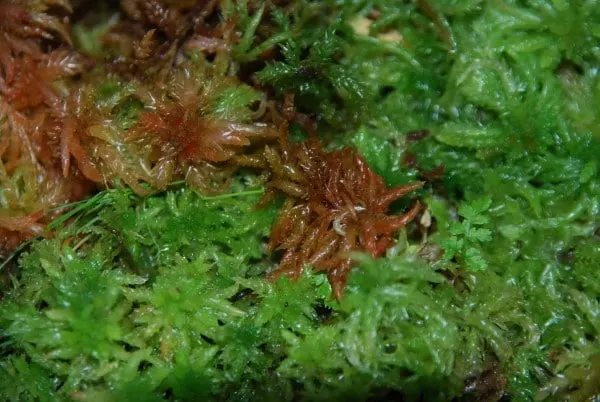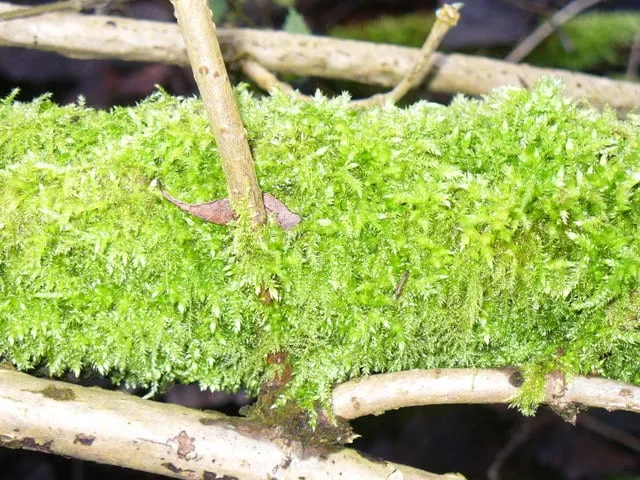Sphagnum moss, also commonly referred to as peat moss, bog moss, or quaker moss, is a species of 380 mosses belonging to the kingdom Plantae. Sphagnum moss is a type of moss with a shallow root network that usually grows in bogs. If you have dried sphagnum moss and want to revive it, keep following to learn how to turn Sphagnum Moss green.
Sphagnum moss has a great water absorption capacity. Sphagnum moss can be used as an alternative to regular soil. It is easily available and affordable and has proven a great medium to grow new plants and sow seeds. Sphagnum moss is also used as mulch to cover the soil.
Sphagnum moss is usually used in its dried state, which can retain water as much as 26 times its actual weight. Sphagnum moss has several helpful uses but buying dried sphagnum moss is not very sustainable because that sphagnum moss is usually a by-product of peatland mines. Peat bogs where sphagnum grows takes thousands of years to form, and taking care of such a fragile climate is more important than ever to mitigate climate change.
Since sphagnum moss is also just a plant, it could be grown under the right conditions. We will teach you how to turn sphagnum moss green and grow your moss in the following article.

Where to Find Sphagnum Moss?
Live sphagnum moss is difficult to find at common stores. However, you can buy dried sphagnum moss easily. You will need only a small amount to cultivate a whole colony.
How to Turn Sphagnum Moss Green
You cannot revive if you have dried up sphagnum moss desiccated for too long. However, the recently harvested sphagnum moss that has not been desiccated for too long could turn green again. Now follow these methods to grow your moss and learn how to turn sphagnum moss green. A video tutorial is linked to guide you best on how to turn sphagnum moss green.
Items You Will Need
- Garden trays
- Landscape fabric
- Water mister
- Sphagnum moss
Method 1: Indoor Culture
Growing the moss indoors is much easier as you can control atmospheric factors like humidity, temperature, and light much more easily and have more control. They could be adjusted according to the needs of sphagnum moss.
- First, you will need two stackable gardening trays. Put the tray with a drainage hole on the top; and the one without it at the bottom. Line this tray with a moist landscape cloth or shade cloth.
- It will mimic the conditions of a bog. The water from the top tray will fall from the drainage hole and be collected by the cloth in the bottom tray. It will create a high humidity environment.
- To maintain the moisture and humidity use an enclosed system like a terrarium, cold frames, greenhouse, aquariums, humidity domes, or use lids.
- Please take out the sphagnum moss you bought and cut it into smaller pieces of about 1 to 4 inches since it comes in a compact, entangled form.
- Mow evenly spread out the pieces of moss on the thoroughly moistened cloth, and spray it with water.
- Place your trays under the dome or whichever method you are using and lift the lid for a few minutes daily to let in some fresh air.
- Place your sphagnum moss at a place that receives sufficient bright light. You can also use bright lamps if you do not get enough sunlight or during the short winter days.
- After some days, you will see the new green sprouts of your sphagnum moss growing.
Method 2: Outdoor Culture
- You can grow sphagnum moss outdoors, preferably in an area that tends to stay wet in your garden. You can even grow it by the fountain, pond, or water body. You can also create your little bog from scratch.
- Select a location with part shade if you are growing sphagnum moss outside. The cooler sunlight of the morning is good for the moss as it cannot do well in very bright direct sunlight.
- To mimic a bog, dig a small basin in the ground. It will help retain more moisture and hold water, creating a humid environment.
- Dig about 2 feet deep and as wide as you need, depending on how much sphagnum moss you want to grow. Fill the hole with some compost and leave about 6-inches of space below the hole.
- Snip off the sphagnum moss into smaller parts and spread it evenly across the hole’s surface.
- Keep checking your sphagnum moss regularly and ensure that the plants stay moist.
- After a couple of weeks, your sphagnum moss will grow quite rapidly.

Harvesting the Sphagnum Moss
Keep taking care of your sphagnum moss and provide it with a warm and humid environment. If the conditions are met, the sphagnum moss will grow healthier and fill up the space within one or two months.
Sphagnum moss grows in the form of colonies, and each strand of moss can grow somewhere between 1 to 12 inches long.
Snip the moss using a curved pair of scissors and collect them over a separate tray. Now you can use this moss to harvest it or grow more sphagnum moss colonies.
How to Dry the Fresh Sphagnum Moss
To dry sphagnum moss, spread it between dry paper towels and press it to absorb all the water from the moss. Repeat this process several times with fresh, dry paper towels to remove all the moisture. Try to desiccate your sphagnum moss and then spread it out on a tray. Place the tray in an area with excellent ventilation. Sphagnum moss will start drying out within seven days.
Now collect your moss and use it however you want. Sphagnum is a great substitute for soil, and it can also provide better drainage and more water retention, as per your needs.
Living Sphagnum Mulch
You can also use your sphagnum moss as mulch in the living state. Take strands from your fresh green sphagnum moss culture and sow them around the plant for which you need mulch. The sphagnum will grow around the plant’s soil effortlessly and stay green and hydrated.
When it starts getting too big, you can prune it back to prevent it from overtaking the plant. Living sphagnum mulch is especially good for plants that prefer a humid environment. Plants like ferns, orchids, sundews, pitcher plants, Venus flytrap, and other cultivars favor a humid climate, and living sphagnum moss can benefit them.
Conclusion
You know what a godsend sphagnum moss is if you are a gardener. Sphagnum moss is considered a holy grail by plant growers with its numerous helpful uses. You could use sphagnum moss in the living state and the dried form.
The dried sphagnum moss retains more moisture, whereas the living one provides more humidity and gives a lush green color to your pots. However, obtaining fresh green sphagnum moss can be tricky. In this helpful guide, we have shared two amazing methods and some additional tips on turning sphagnum moss green.
Direct your queries and feedback to the comments section below.
